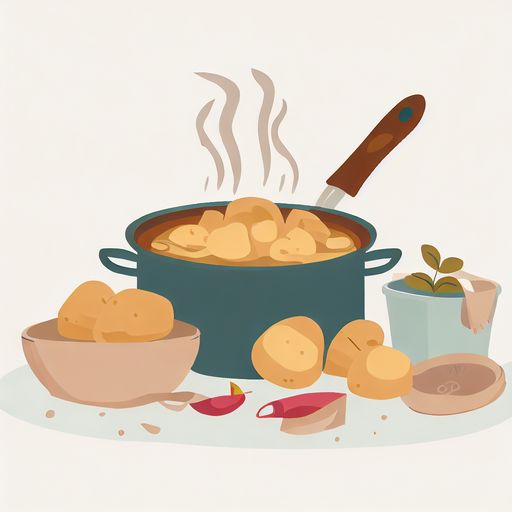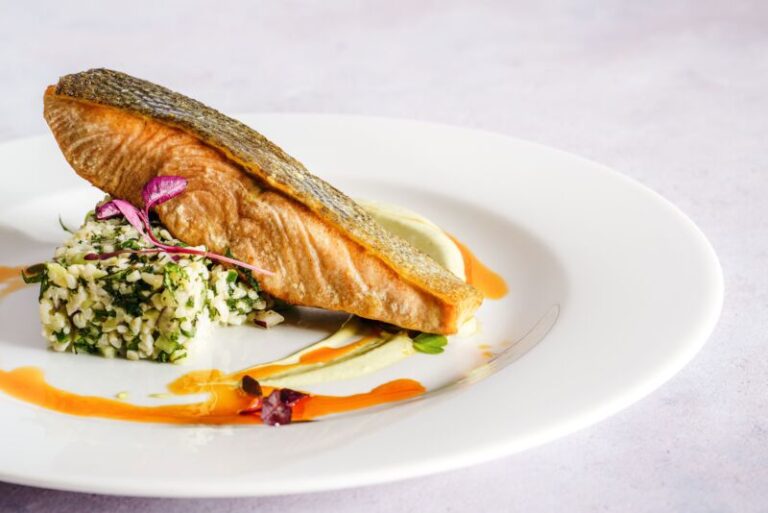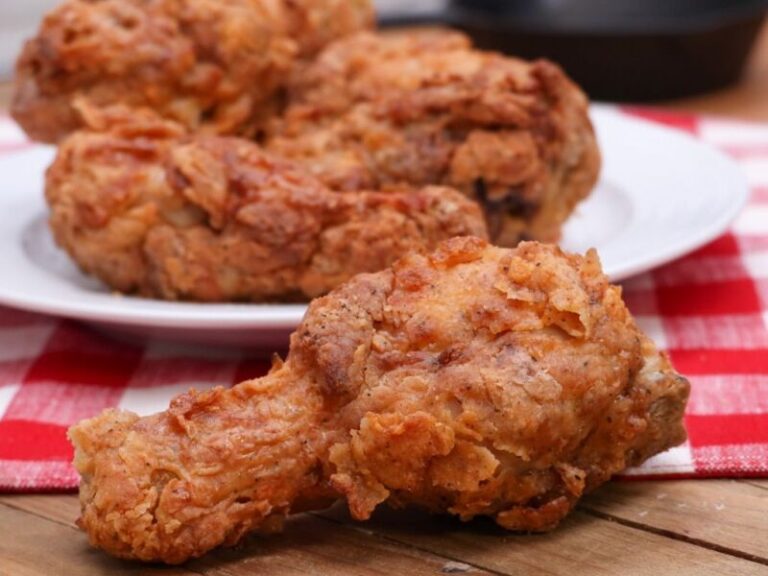When To Add Potatoes To Soup And Stew?
When making soup or stew recipes that call for potatoes, a common question is whether the potatoes should be cooked separately before adding them to the pot. There are pros and cons to pre-cooking potatoes versus adding them directly to the soup or stew. In most cases, pre-cooking is not necessary and potatoes can simply be prepared and added directly to the cooking liquid. However, there are some circumstances where par-cooking potatoes may be preferred.
Factors to Consider
There are several factors to take into account when deciding whether to cook potatoes before adding them to soups or stews:
- The desired texture – Firm pieces or falling apart
- Thickening effect – Using raw potatoes to thicken liquid
- Timing of addition – When to add for even cooking
- Potato type used – Waxy or starchy varieties
Considering these factors will help determine the best method for your specific recipe.
Adding Potatoes to Stew
When making beef stew, chicken stew or other hearty meat-based stews, the goal is often to have tender but distinct chunks of potato throughout. For the best texture, potatoes are typically added raw during the last 30 minutes of cooking.
Avoiding Mushy Potatoes in Stew
If potatoes are cooked too long in stew, they tend to get overcooked and mushy. Adding raw potato cubes during the final half hour allows them to cook just long enough to become fork-tender without falling apart.
Steps for Preparing Potatoes for Stew
- Keep potatoes raw until the last 30 minutes of cooking time
- Peel if desired and cut into 1-inch cubes
- Rinse the cubes briefly to remove excess starch
- Add potatoes to the simmering stew and cook until tender, about 30 minutes
This method ensures the potato pieces retain their shape and texture in the finished stew.
Cooking Potatoes Separately
Some stew recipes call for browning or par-cooking the potatoes before adding them to the stew. This can enhance the flavor by allowing the potatoes to absorb herbs and seasoning. To do this, boiled cubed potatoes in broth or stock instead of water. Then add the partially cooked potatoes and liquid to the stew about 30 minutes before serving.
Adding Potatoes to Soup
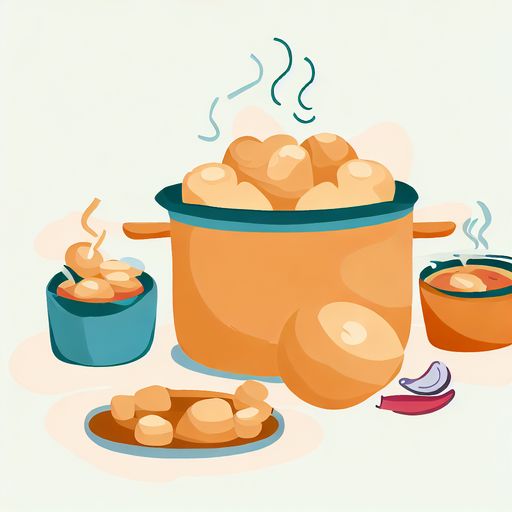
The preparation of potatoes for soup depends on the desired finished texture and purpose of the potatoes.
Potatoes Absorb Flavors
When making vegetable soups, potato soup, or broccoli cheese soup, potatoes are often cooked right in the soup liquid. This allows them to soak up flavors from the broth or cream base as they soften. Leaving them in the simmering soup ensures they reach the perfect creamy, soft texture.
Using Potatoes to Thicken
Adding potatoes at the beginning is recommended when using them as a thickening agent. The starch released from raw potatoes as they cook acts as a natural thickener. Potatoes blended into creamy soups also create a thicker consistency.
Maintaining Potato Shape
If distinct chunks of potato are desired in the finished soup, par-cook them before adding to the soup. Boil or steam them until just underdone, then drain and add later in the cooking process to finish cooking without becoming overdone.
Picking the Right Potato
The variety of potato makes a difference in soup too. Waxy potatoes like red or Yukon gold hold their shape well for nice chunks. For a thicker soup, starchy russet potatoes break down more and release more starch.
When to Add Potatoes
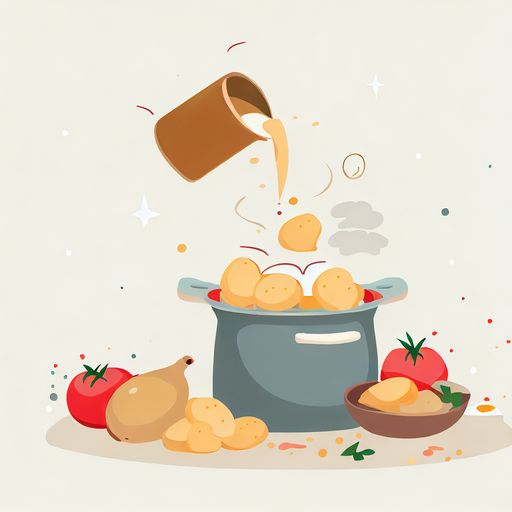
Beginning: Thickening Soups
Adding raw potatoes at the start helps thicken soup as the starch slowly releases. The potatoes will completely break down into the liquid during the long cooking time, leaving no distinct pieces behind.
End: Firm Potato Pieces
Waiting to add potatoes until the last 20-30 minutes preserves nice chunks of potatoes in soups and stews. The short cooking time prevents them from becoming mushy or overdone.
Cooking Time for Potatoes
In general, potato cubes take roughly 20-30 minutes to become tender when simmered. Poking them with a fork helps test doneness. Avoid overcooking or the potatoes will fall apart in the soup.
Cutting Potatoes to Similar Sizes
No matter when you add them, cutting the potatoes into evenly sized 1-inch cubes ensures they cook at the same rate. This prevents some pieces from ending up underdone while others get mushy.
Preparing Potatoes
Peeling and Washing
Peel potatoes if you want a smooth texture. Leaving the skin on adds fiber and nutrients. Always wash potatoes before cutting to remove any dirt.
Cutting
Cut potatoes into bite-sized pieces about 1-inch wide. The smaller they are cut, the faster they will cook. Keep pieces close to uniform in size for even cooking.
Precooking
If you want distinct chunks of potato in soup, parboil or steam them for 5-10 minutes before adding to the soup. This retains their shape while finishing cooking in the soup.
Softening Time
Regardless of when you add them, potatoes take about 20-30 minutes to soften when simmered in liquid. Test doneness with a fork to avoid overcooking. Undercooked raw potatoes will remain crunchy hard.
Potatoes as Thickeners
One way to naturally thicken soups without flour or cornstarch is to use potatoes. The starch released from potatoes as they cook adds body and thickness to soups and stews.
Starch for Thickening
It’s the starch in potatoes that provides the thickening ability. For this reason, high-starch russet potatoes work best to thicken soups.
Gluten-Free Alternative
Potatoes can help thicken soups and stews for people with gluten intolerance who cannot use wheat flour. The starch gradually mixes into the liquid without clumping.
Conclusion
In most soups and stews, it is unnecessary to pre-cook potatoes. They can simply be prepared with peeling/washing, cut into even cubes, and added to the pot.
- Add potatoes at the end for firm distinct pieces
- Add potatoes early to use their starch to thicken
- Allow 20-30 minutes for potatoes to become tender
- Avoid overcooking so potatoes don’t get mushy
With a little planning and timing, potatoes can be added directly to soups and stews with great results.
